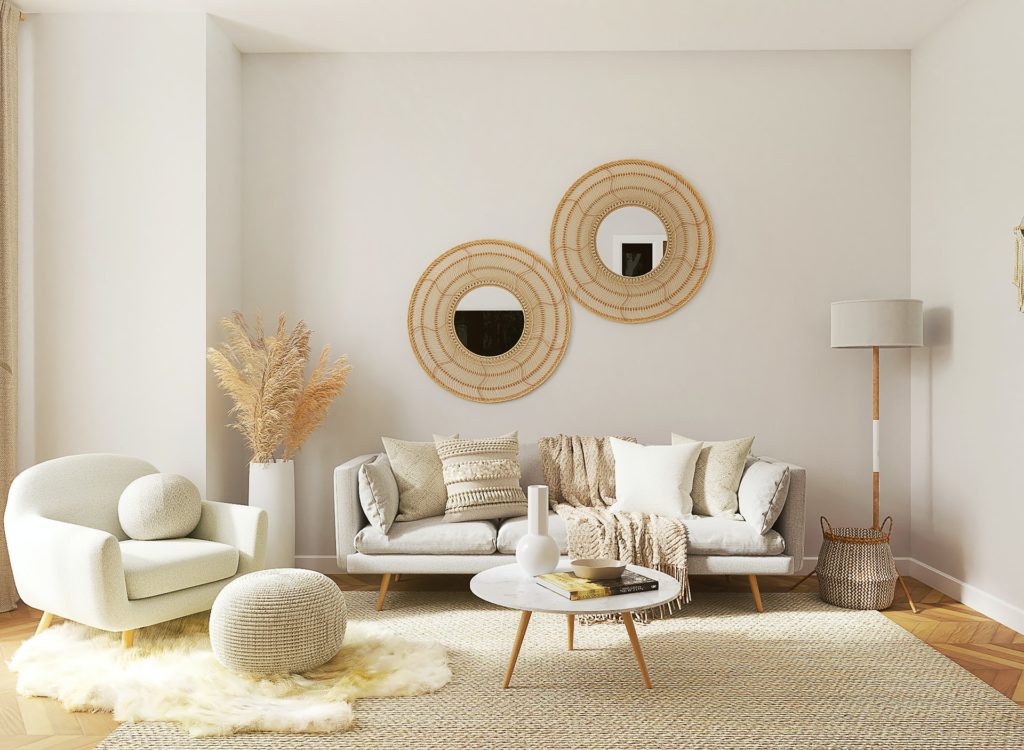When it comes to interior design, texture plays a critical role in creating a visually appealing and comfortable space. Texture refers to the tactile quality of surfaces in a room, and it can be rough, smooth, soft, hard, shiny, or matte. Incorporating texture into a space can add depth, dimension, and interest, and it can also create a sense of warmth and coziness.
Texture is an essential element in interior design that can transform the look and feel of a space. It refers to the surface quality of materials, such as roughness, smoothness, softness, or hardness. By incorporating texture into a room, designers can create visual interest and depth, adding a tactile dimension to the decor. Texture can also evoke different moods and emotions, making it a powerful tool for setting the tone of a space. For example, rough and natural textures can create a cozy and inviting ambiance, while sleek and glossy surfaces can create a more modern and sophisticated feel.
In this article, we will explore the importance of texture in interior design and how it can be used to enhance the overall aesthetic of a space. We will also provide some tips and tricks for incorporating texture into your own home decor.
The Benefits of Texture in Interior Design
Texture is an essential element of interior design because it can add visual interest and depth to a space. It can also create a sense of balance and harmony, helping to tie different design elements together. Texture can also help to create a mood or atmosphere in a room. For example, incorporating soft and plush textures can create a cozy and inviting atmosphere, while incorporating sleek and shiny textures can create a more modern and sophisticated look.
Additionally, texture can help to add dimension to a room, making it feel more layered and visually interesting. This is particularly important in smaller spaces, where adding texture can help to make the room feel more substantial and less cramped.
Incorporating Texture into Your Home Decor
There are many different ways to incorporate texture into your home decor, from adding soft and plush textiles to incorporating natural materials like wood or stone. Here are some tips and tricks for incorporating texture into your home:
- Add Textiles: Adding textiles like throw pillows, blankets, and rugs can add softness and warmth to a space. Look for textiles with interesting textures, like a chunky knit throw or a shaggy rug, to add visual interest.
- Incorporate Natural Materials: Natural materials like wood, stone, and woven materials can add a touch of organic texture to a space. Consider adding a wood accent wall, a stone fireplace, or a woven basket to bring some natural texture into your home.
- Mix Textures: Mixing textures can create a layered and visually interesting look. Consider pairing a plush velvet sofa with a sleek metal coffee table or layering a faux fur rug over a natural jute rug.
- Play with Contrast: Using contrasting textures can create a striking visual effect. For example, pairing a glossy black lacquer side table with a matte concrete floor can create a dramatic contrast that draws the eye.
- Don’t Overdo It: While texture is an essential element of interior design, it’s important not to overdo it. Too many textures can make a space feel cluttered and overwhelming, so aim for a balanced mix of textures in your home decor.
Conclusion
Texture is a critical element of interior design, and it can be used to create a visually appealing and comfortable space. Incorporating texture into your home decor can add depth, dimension, and interest, and it can also help to create a sense of warmth and coziness. By following these tips and tricks for incorporating texture into your home, you can create a space that is both beautiful and functional.





Leave a Reply